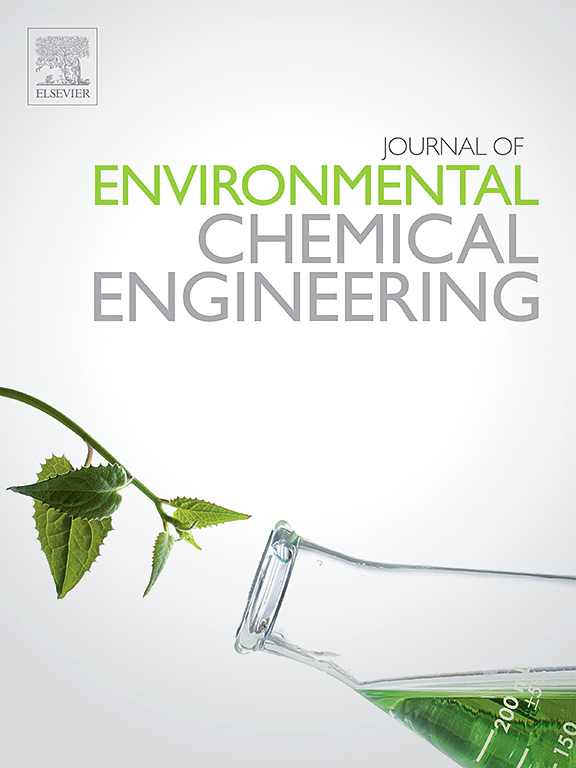Industrial wastewater treatment by downflow hanging sponge system: Techno-economic analysis, life cycle assessment, and sustainable development goals fulfillment
IF 7.4
2区 工程技术
Q1 ENGINEERING, CHEMICAL
引用次数: 0
Abstract
While several studies have discussed the performance of downflow hanging sponge (DHS) systems toward industrial wastewater treatment (IWWT), there is still a research gap in exploring the associated profitability scenarios, environmental aspects, and sustainability criteria. The current study elucidated the principles, advantages, and limitations of IWWT by the DHS-based system, giving detailed explanations on the removal mechanisms of heavy metals, dyes, emerging contaminants, and nutrients. The techno-economic analysis revealed profitability indicators of 6.4-year payback period, 819 USD net present value, and 8.9 % internal rate of return from pollutant shadow price, carbon credits, and biogas selling. The life cycle assessment (LCA) observations exhibited minimal impacts on toxicity, eutrophication, acidification, human health, and ecosystem quality at the midpoint/endpoint hierarchy levels. The proposed DHS-based plant could fulfil sustainable development goals (SDGs), primarily SDG#3 by reducing water-borne disease, SDG#6 by enhancing water availability, SDG#13 by minimizing the carbon footprint issue, and SDG#14 by conserving aquatic environment. This study depicted that the techno-financial analysis and LCA tools could be integrated with the design and optimization strategies of DHS, offering insights into profitability and holistic management approaches in sustainable wastewater treatment. Because energy utilization for pumps’ operation emerged as a critical factor influencing the overall LCA score, future investigations should employ biogenic sources for electricity supply and apply artificial intelligence techniques to optimize the equipment operation mode that could reduce the expected CO2 emissions. Further studies would also consider expanding the inventory data size, incorporating additional operating factors, and validating the LCA outputs experimentally.
求助全文
约1分钟内获得全文
求助全文
来源期刊

Journal of Environmental Chemical Engineering
Environmental Science-Pollution
CiteScore
11.40
自引率
6.50%
发文量
2017
审稿时长
27 days
期刊介绍:
The Journal of Environmental Chemical Engineering (JECE) serves as a platform for the dissemination of original and innovative research focusing on the advancement of environmentally-friendly, sustainable technologies. JECE emphasizes the transition towards a carbon-neutral circular economy and a self-sufficient bio-based economy. Topics covered include soil, water, wastewater, and air decontamination; pollution monitoring, prevention, and control; advanced analytics, sensors, impact and risk assessment methodologies in environmental chemical engineering; resource recovery (water, nutrients, materials, energy); industrial ecology; valorization of waste streams; waste management (including e-waste); climate-water-energy-food nexus; novel materials for environmental, chemical, and energy applications; sustainability and environmental safety; water digitalization, water data science, and machine learning; process integration and intensification; recent developments in green chemistry for synthesis, catalysis, and energy; and original research on contaminants of emerging concern, persistent chemicals, and priority substances, including microplastics, nanoplastics, nanomaterials, micropollutants, antimicrobial resistance genes, and emerging pathogens (viruses, bacteria, parasites) of environmental significance.
 求助内容:
求助内容: 应助结果提醒方式:
应助结果提醒方式:


